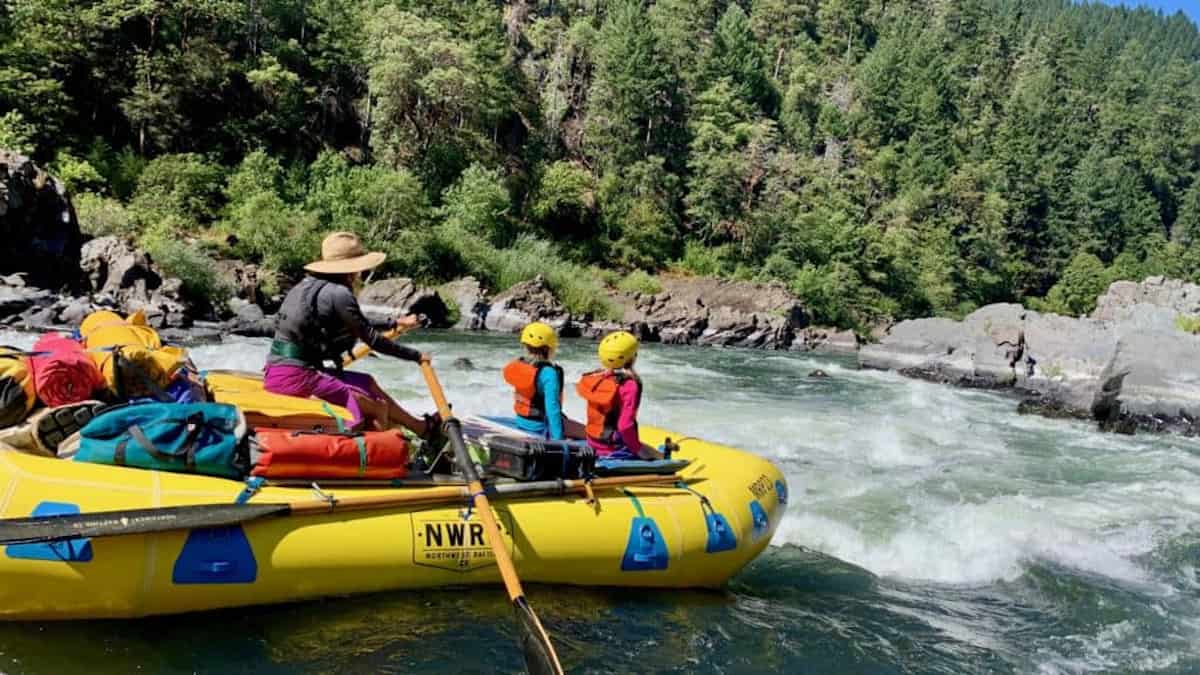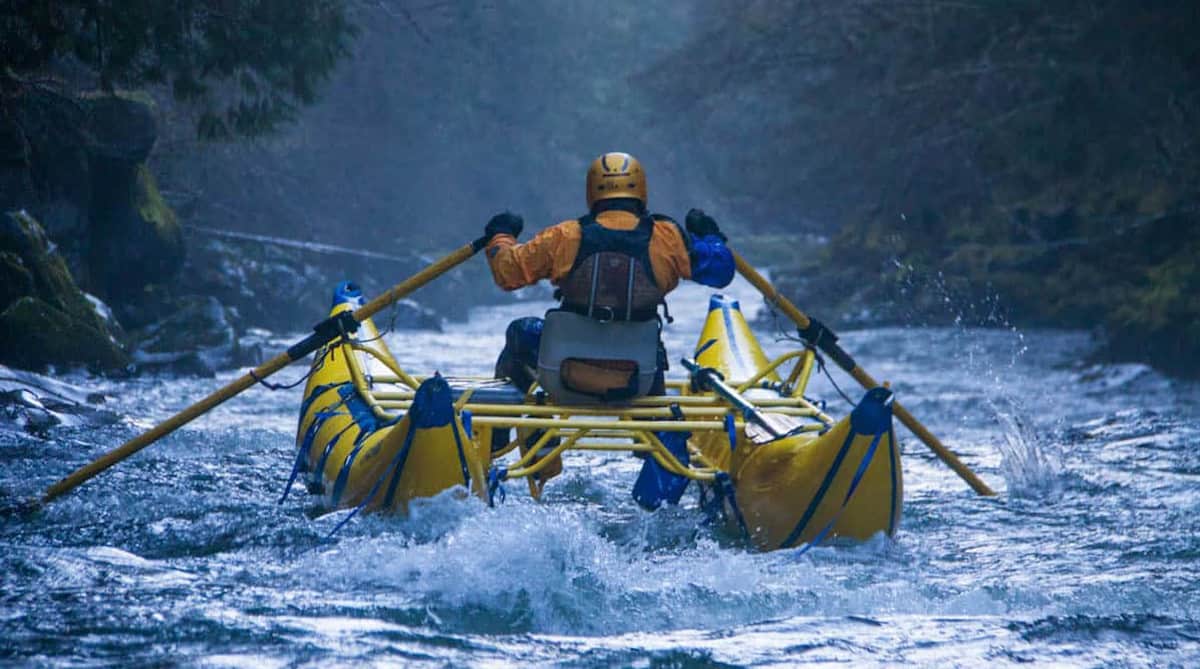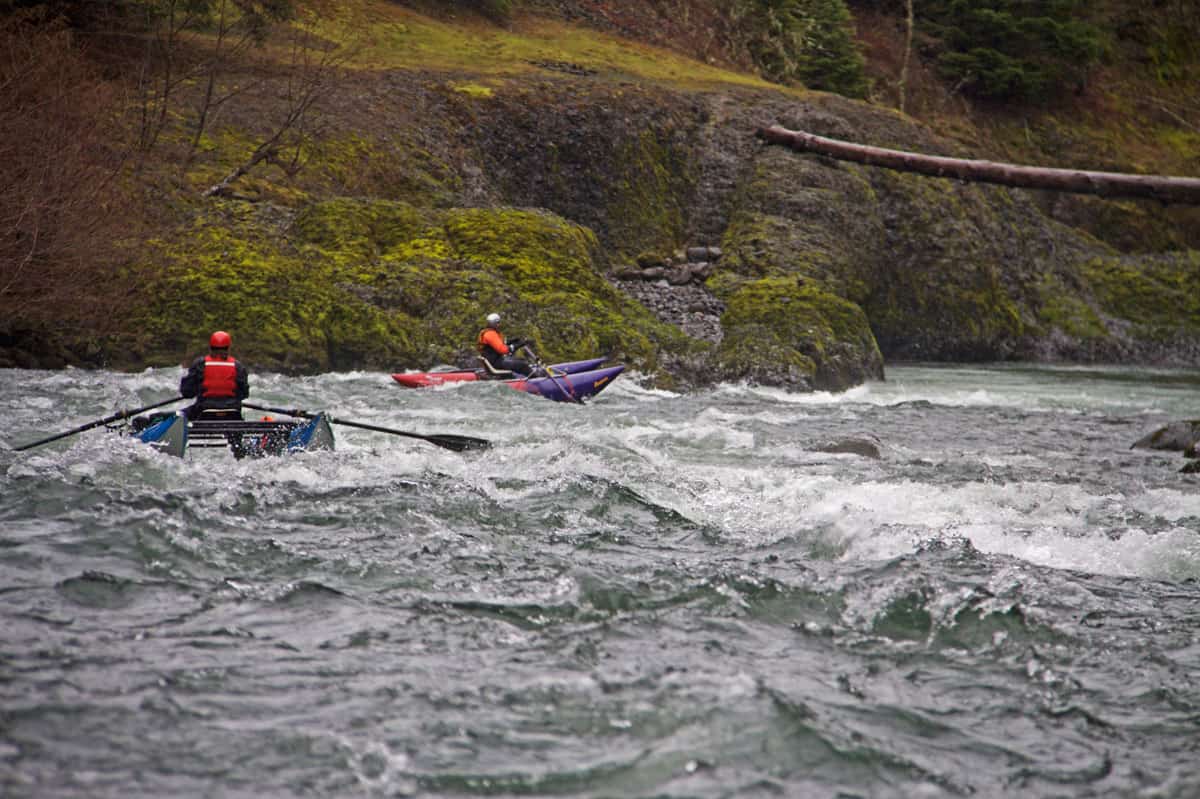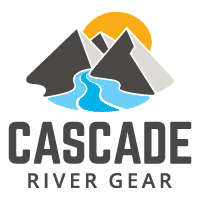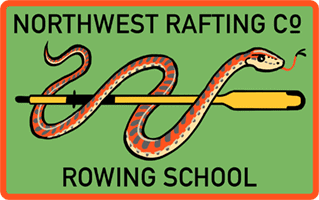How to Determine Proper Oar Size
Properly sized oars can make all the difference when seeking a comfortable rowing experience and good lines. Below is a guide for determining the right oar size given a variety of variables and activities. While this article provides a baseline, nothing replaces trying out different length oars for yourself.
How Long Should Rowing Oars Be?
This article is here to help, but there is no one-size-fits-all approach. In general, proper oar size factors are oar tower width, boat height relative to the water, and your height relative to the oar towers. To get in the weeds, a truly optimized oar choice will factor in oar tower distance, tube size, your rowing position height, your own height and strength, type of water, and even the load on the boat. Width here is more important than the length of your boat.
In general, proper oar size factors in oar tower width, boat height relative to the water, and your height relative to the oar towers.
What Does Proper Oar Size Look Like?
You know when a rower chose the right size oars after watching them take a forward (push) stroke. Their oar handles are at shoulder height and the entire blade is in the water. Additionally, their feet are squarely braced and their oar towers are about even with their knees.
You know when a rower chose the wrong sized oars after watching them take a forward (push) stroke as well. Their oar handles are outside and/or above their body with their elbows flared out. Only part of the blade enters the water and they cannot brace securely. Finally, their oar towers are far above the knees.
What Factors Affect Oar Size?
If you will primarily stick with one type of whitewater or activity, your oar length can reflect that choice. Some boats and frames are for fishing excursions while others are meant to carry gear on big water multi-day trips. To handle the tighter spots on those fishing expeditions sometimes a shorter oar is better. The bigger water trips will want some longer oars that can offer more power. For example, a fully-loaded 18' gear boat on the more technical Middle Fork of the Salmon will perform well with 10.5' oars. The same gear boat on the Grand Canyon can justify 11' oars.
Less length reduces the effort needed to push the oar through the water (as well as narrower blades and wider oar locks). To increase purchase on the water, longer oars (as well as larger blades and closer oar locks) may be preferable but will require a little more effort.
Below I have summarized how to decide whether to choose oars on the longer or shorter end of the spectrum in relation to your boat.
| Oar Size | Considerations | Style of Whitewater |
|---|---|---|
| Longer Length | Taller Rower Big tubes Wide oar towers distance | Bigger water Need power |
| Shorter Length | Shorter rower Smaller tubes Narrow oar tower distance | Technical water Shallow water Fishing |
How Do You Determine Oar Length?
To start you off based on what we discussed above, take out the tape measure and get to know three things about your setup:
- Oar tower width
Oar towers attach the oars to the frame and usually stretch 3-4 inches beyond the center of the tube. Place your oars in the oar locks and flatten them to horizontal. Allow for a few inches between the handles. At the minimum, ⅔ of the oar should be located outside the boat. - Tube diameter
Larger tubes mean that the frame sits higher out of the water. More space between the oar tower and the water means longer oars. For example, a tall boater running a 16' cataraft, 70" oar tower width, and 24” tubes would comfortably start with 9.5' oars. But if the cataraft had 26” diameter tubes their comfortable baseline would begin at 10 feet. - How you sit in the boat
Optimize your seat height so that your oars naturally rotate at the right places on your body. Some oar towers are too high which then lifts your arms too high when you go to push, throwing off your oar length measurement. Off the water, you can get a ballpark adjustment by setting everything up except your oar blades on a flat spot (garage or lawn). Adapt the oar tower height, oar tower placement on the frame, and cooler height to each other so that the bladeless oars sweep the floor while maintaining correct positioning as explained before.
“Normally I see boaters with oars that are too short rather than too long, but personal preference is key to an optimal setup."Zach Collier
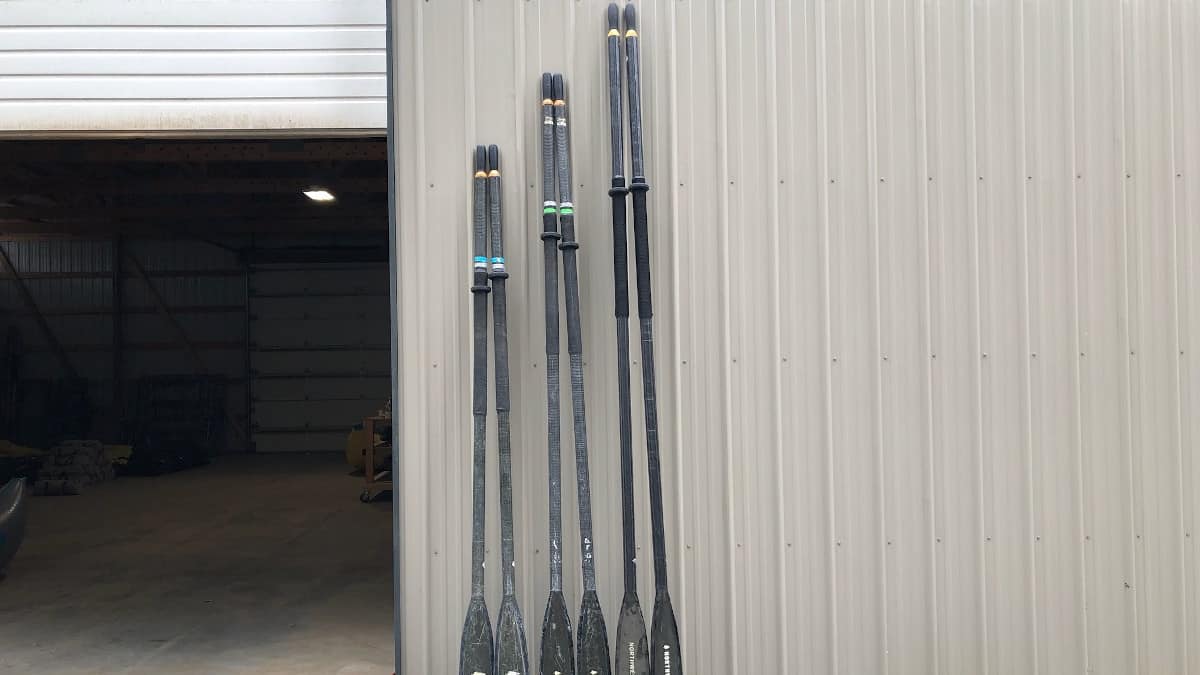
Sawyer 9 foot, 10 foot, and 11 foot oars.
Finally, a subtle point on gear weight. The more gear on the raft the lower it sits in the water and the shorter the oar size. An average rower with a 14' raft and 66" tower width might choose 10' oars for a light day trip. But fully loaded the boat may support 9.5 foot oars. If you can spoil yourself with different sized oars, you can adjust accordingly.
General Rule of Thumb
To start you off, here is a table that gives you the usual ranges based on boat length for both rafts and catarafts. Generally a longer boat is also slightly wider, and you need more power to move it around. Thus a larger oar size. While boat length is a standard metric, remember that brands and frames have different widths. Nothing can substitute measuring and practicing yourself.
For rafts:
| Raft Length (ft.) | Oar Length (ft.) |
|---|---|
| 13-14 | 9-10 |
| 16 | 9.5-10 |
| 18 | 10.5-11 |
For catarafts:
| Cataraft Length (ft.) | Oar Length (ft.) |
|---|---|
| 12 | 8.5-9.5 |
| 14 | 9-10 |
| 16 | 9.5-10.5 |
Consequences of Improper Oar Length
A few rowing problems can be caused by wrong oar size. If your oars are consistently popping out, your oars could be too short. To help the blades reach the water the rest of the shaft is at a high diagonal which pops them out. Adjust to create a better angle for the oar lock. To test your oar size, make sure that your oar handles are in line with your shoulders as you initiate the stroke and that the blade still sits comfortably in the water. Arms outside the body can especially affect the ergonomics of rowing, and can lead to elbow or shoulder problems down the road.
“Proper size oars for the boat you have makes all the difference in the world - you now have the setup to actually practice proper mechanics of rowing.”Brodie Sullivan
Alternatively, if you tire quickly over the day, your oars may be too long. Too much weight outside the boat and in the water means that each stroke takes more effort to complete. On multi-day trips, this can make for difficult days especially when faced with tough weather or technical rapids. You also know your oars are too long when they cannot clear the knees during the return stroke.
While it is difficult at first to determine oar size, with time and practice you can find a good compromise. Your body and your sweet lines will reap the benefits of taking the time to find what works best for you and your setup.
Comment below and let us know what size oars you decided to use for your boat!
